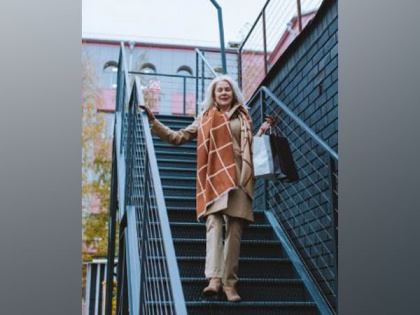Study: Low-intensity exercise may help maintain mobility in older ladies
By ANI | Published: February 27, 2021 10:16 PM2021-02-27T22:16:43+5:302021-02-27T22:25:24+5:30
A study led by a team of scientists from Herbert Wertheim School of Public Health and Human Longevity Sciences at UC San Diego proposed that low-intensity workouts may ensure mobility in more older ladies.

Study: Low-intensity exercise may help maintain mobility in older ladies
A study led by a team of scientists from Herbert Wertheim School of Public Health and Human Longevity Sciences at UC San Diego proposed that low-intensity workouts may ensure mobility in more older ladies.
While the low-intensity workout is recommended to people of all ages to maintain agility and fitness, the findings published in the online issue of 'JAMA Network Open' suggested that light-intensity physical activity, including shopping or a casual walk, may protect mobility in older women.
One in four women over age 65 is unable to walk two blocks or climb a flight of stairs. Known as mobility disability, it is the leading type of incapacity in the United States and a key contributor to a person's loss of independence.
Researchers found that women who did not have a mobility disability at the start of the study, and who spent the most amount of time doing light-intensity activities, were 40 percent less likely to experience loss of mobility over a six-year period.
"Older adults who want to maintain their mobility should know that all movement, not just moderate-to-vigorous physical activity, counts," said senior author Andrea LaCroix, PhD, MPH, Distinguished Professor and chief of the Division of Epidemiology at Herbert Wertheim School of Public Health.
LaCroix added, "We found that, among older women, light-intensity physical activity preserves mobility later in life."
The prospective study observed 5,735 women age 63 and older, living in the United States and enrolled in the Objectively Measured Physical Activity and Cardiovascular Health Study, an ancillary study of the Women's Health Initiative.
Participants wore a research-grade accelerometer for seven days to obtain accurate measures of their physical activity. The mean time spent in light physical activity was 4.8 hours per day.
Researchers found that women who spent the most time performing light-intensity physical activity had a 46 percent lower risk of mobility loss compared to women who participated in lower levels of physical activity.
Similar results were observed among white, Black, and Latinx women. Women with and without obesity also reduced their risk of mobility disability, but the benefit was strongest among women with a body mass index (BMI) of less than 30.
"Moderate-to-vigorous physical activity is increasingly more difficult to perform as people age. Considering the aging population in the United States, these findings could have major impacts on public health recommendations, putting more focus on the importance of the light physical activity to improve the health and well-being of older women.
Doing so may help women maintain mobility and independence as they age," said co-author John Bellettiere, PhD, professor of epidemiology at Herbert Wertheim School of Public Health.
Adults in the United States age 65 and older struggle to meet physical activity guidelines, which recommend 150 minutes of moderate-to-vigorous physical activity per week.
There is no available guidance on how much light activity people should do, largely because very few studies have investigated it. Study authors said their data suggest that light activity is likely important for maintaining mobility, which is essential for healthy aging.
Older adults with mobility disabilities experience more hospitalisations and spend more on health care. Women bear a disproportionate burden of mobility disability.
"The highest levels of light-intensity physical activity are unnecessary. After five hours of activity, we observed no further increase in benefit," said first author Nicole Glass, MPH, a doctoral candidate in the San Diego State University/UC San Diego Joint Doctoral Program in Public Health.
"In addition, our results showed that light-intensity physical activity was associated with preserved mobility regardless of the amount of higher-intensity physical activities, such as brisk walking, jogging or running, the women engaged in. So whether you exercise or not, higher light-intensity physical activity is healthy," added Glass.
( With inputs from ANI )
Disclaimer: This post has been auto-published from an agency feed without any modifications to the text and has not been reviewed by an editor
Open in app